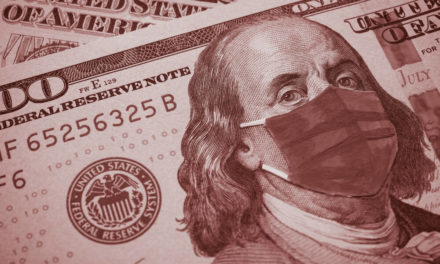It seems that most of the Twittersphere has been focused this week on Tuesday’s presidential debates.
Let’s steer clear of that one…
Instead, I wanted to talk about something positive.
August saw the biggest gain in home prices across the country since September 2013; prices rose an astounding 9.1% at annual rates.
Read more in tonight’s Closer: https://t.co/GPsJirYlYH pic.twitter.com/d4IBtvBIII— Bespoke (@bespokeinvest) September 29, 2020
Bespoke Investment Group reported this week that home prices rose at a 9.1% annual clip in August. That’s the largest monthly move since September 2013.
You know the old expression that “all politics are local.” Well, the same thing is true of real estate. Prices in any given area are dependent on the supply and demand dynamics at that place and time. The 9.1% number that Bespoke quotes is a national average.
But drilling down to individual cities tells another interesting story.
We don’t have August numbers from the Case-Shiller Home Price Indexes yet. But data from July shows broad-based gains:
- Phoenix home prices grew at an 8% clip.
- Seattle grew by 6%.
- Charlotte and Tampa saw 5% growth.
- New York and Chicago lagged the group, but home prices held steady.
That’s remarkable considering New York was hit so hard by the coronavirus pandemic and the lockdowns that followed.
Not only are prices going up, but they are rising at a faster pace. Of the 19 cities on the list with data, all but three have enjoyed faster price appreciation over the past 12 months than they did in the previous 12 months. New York had flat momentum. Chicago and Las Vegas showed prices rising about 1% slower than the previous year.
So, not only are house prices still rising in spite of COVID-19 … they’re rising faster in most markets than before the pandemic started.
Let’s look at the two main reasons this is happening.
What’s Behind Soaring Home Prices
No. 1: To start, the novel coronavirus is playing a role here. If you’re going to be stuck at home more than usual, you want square footage. So, former urban dwellers are driving up demand for suburban and exurban homes.
But at the same time, real estate prices can be sticky in declining markets.
Rather than sell at bargain-basement prices, sellers will simply hold on to the property longer in the hopes that prices recover.
For example, we’ve all heard plenty of stories of New Yorkers fleeing the city to buy houses in Connecticut or the Hamptons. There aren’t a lot of buyers for Manhattan apartments at the moment. Prices in New York are holding up for now, but that may change if sellers decide to take their losses.
No. 2: The surge in home prices also reflects how unevenly the COVID crisis has hit America. The pandemic hasn’t affected many typical high-income homebuyers. They’ve been able to carry on working from home. So, even if the economy is rickety, it’s not bad at all for the roughly half of the country that owns a home.
No. 3: Finally, we need to consider the Fed: The Federal Reserve has moved heaven and earth to keep capital markets flowing. Interest rates are near zero, and the central bank is buying a record amounts of bonds.
In doing this, the Fed prevented the crisis from being significantly worse. But much of the liquidity it created has sloshed its way into the housing market.
We’ll find out how this all ends … eventually.
But the Fed is inflating a bubble, and I expect it to pop that same bubble.
The Fed will eventually raise rates and start to drain liquidity out of the system. Mortgage rates will rise. And when they do, homes will get far less affordable.
And it’s also possible that the Fed will lose control, and we’ll end up with nasty inflation. That’s generally good for real estate prices.
That’s still a few years away.
And it’s also possible that the Fed will lose control, and we’ll end up with nasty inflation. That’s generally good for real estate prices.
We’ll see. But if that happens, the move in home prices may just be getting started.
Money & Markets contributor Charles Sizemore specializes in income and retirement topics. Charles is a regular on The Bull & The Bear podcast. He is also a frequent guest on CNBC, Bloomberg and Fox Business.
Follow Charles on Twitter @CharlesSizemore.





